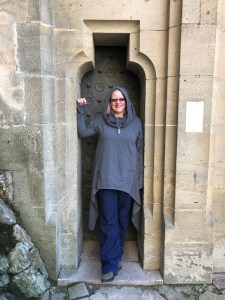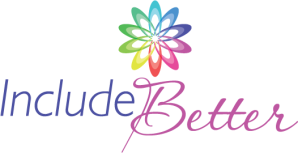October 16th, 2019 is International Pronouns Day this year! That’s, uh, a mere two weeks away! I’m on the board of the IPD endeavor, and want to share a few resources and links I am particularly excited about.
First off, my pronouns are they/them or she/her in English (with a preference for they/them), so I’m particularly focussed on ways in which nonbinary folks can express ourselves. I was thrilled to see the Merriam-Webster Dictionary get on board with “singular they” this year. Mazal tov!
Are you new to the wide range of pronoun options? Unsure what misgendering is? Here’s a quick overview page you can use to familiarize yourself. You can also take a quick peek at Wikipedia’s page on the topic.
You might imagine what it would be like in a world where schools taught nonbinary pronouns. Perhaps folks would use gender-inclusive forms of address, like the options I posted about a couple of years ago.
If, like me, you know some American Sign Language, you also might be excited to see this video of nonbinary ASL terms. 🙂
Non-English Pronouns:
There’s a good essay on The Establishment concerning a survey of genderqueer folks who try to describe themselves in languages that are natively gendered.
Due to my volunteer work in Finland in years past, I was already aware of the Finnish pronoun hän, which is the only (third person singular) pronoun in the Finnish language. It’s used to describe everyone. (Hilariously, this meant that I was the last to know when a Finnish friend of mine came out as trans. Because no one changed how they referred to her, other than her name, I thought we were talking about someone new to the group!)
This year, I learned about Swedish ‘Hen’ (Gender-Inclusive Pronoun). It’s a recent addition, but gaining traction! Some studies suggest that usage of “hen” can decrease gender stereotyping.
Icelandic has also begun efforts in this direction! The most typically used form is hán (hán/háni/háns) but there are also two other gender-neutral pronouns as well. Iceland has also now adopted a Gender Autonomy Act which means that Icelandic names are no longer gendered and that individuals can choose to identify as gender X (vs male or female) on their official documentation.
Interested in Chinese? Chinese pronoun and language options are discussed a little bit on this website, and a bit of additional perspective is here. (If you know of more info on Chinese and nonbinary folks that’s available online, I’d love to hear about it! My friend who’s nonbinary and Chinese is closeted and doesn’t feel safe putting things online about their thoughts.)
Here’s a French book on gender-inclusive language (which I can’t read, but my spouse is in the middle of). There’s also extensive discussion of “-iel” in French, and transgender people, on this website. (Note: I know approximately two words in French, so I’m going on others’ recommendations, here, but they look good!)
Hebrew is a very binary-gendered language, usually, but here’s an effort to make a more inclusive Hebrew for the future. The google doc about the effort is here.
I wish there were an essay like this about translations between every language, but for now, I enjoyed this essay about translating a Korean book with a nonbinary main character, set in a world where gender change can be as easy as a shopping trip.
Spanish is a language very invested in the false binary of gender, traditionally. Here’s an essay about one nonbinary person’s feelings about this (in English). One publication de Chile en español, Le Trans, produced this really great publication about nonbinary folks in 2017. “El binarismo de género solo existe porque se lo inventaron; es a esa imposición que hoy día nos rebelamos.” Agreed!
Want more on Spanish? Yo estudio español un pequito! Here’s what folks are saying on the Duolingo forums online. Wikipedia has an entire article on gender neutrality in Spanish. Here’s another resource for writing in a gender-inclusive fashion en español. Here’s a video of an Argentinian child explaining use of gender-inclusive words, which went somewhat viral last year!
Want to know more about pronoun options in English?
Ready for a deeper dive? Writing the Other, led by Nisi Shawl and K. Tempest Bradford, offers several classes on the topics of pronouns, including a deep dive into neopronouns and writing for trans and nonbinary narratives.
No post can be exhaustive, honestly. There are as many ways to express gender as there are people in the world. That said, there are lots of gender-inclusive pronouns listed in several languages here at the nonbinary resource on Tumblr. The Nonbinary Wiki also has many languages listed. You’re welcome to add your thoughts in the comments section on this post, too!
Want to join in?
You’re always welcome to endorse International Pronouns Day, as an individual or as an organization! Endorsing the event puts you on our email list (where we very occasionally send links and resources such as the ones in this blog post, for example) and on our radar. Feel free to join in!
This post was updated to include even more info gathered on Oct 15, 2019.


One thought on “International Pronouns Day 2019: Internat’l Resources”